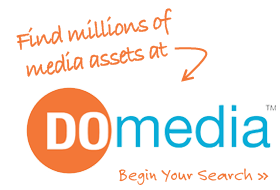COLUMBUS, Ohio, April 30th, 2014 – DOmedia, the preeminent media buying and selling platform in the advertising industry, has received approval from the Traffic Audit Bureau (TAB), the leading source of out-of-home (OOH) media measurement systems in America, to use and display TAB Out-of-Home Ratings for over 350,000 media assets in the United States.
With the integration of the TAB data into DOmedia’s platform, agency users can now plan and buy OOH media more strategically and efficiently. The integration facilitates the standard use of ratings and provides agencies, which are full members of TAB, access to audience, reach and frequency measurements. DOmedia has continually enhanced its planning and buying applications to meet the call of the industry to innovate and improve business processes benefitting agencies as well as media selling companies.
Norm Chait, Senior Vice President at MediaVest USA adds “The adoption of technology and systems like this allow us to harness the power of the new TAB ratings by putting it on the desktop of our buyers, helping us to buy smarter, be more accountable and speak the same language as other media.”
“Since DOmedia’s launch in 2008, the team’s vision has been to make planning, buying and selling OOH media faster, smarter and better,” according to DOmedia’s President, Ken Sahlin. He adds, “The integration of TAB Out-of-Home Ratings in our applications help planners and buyers more easily assess the strategic capabilities of OOH to other measured media.”
According to Jack Sullivan, Senior Vice President, Director at Starcom USA, “With TAB granting a third-party data license to DOmedia, Starcom can more effectively and efficiently leverage out-of-home reach and frequency measures into our cross-media planning and buying processes that create positive impact for clients’ bottom lines.”
About DOmedia
DOmedia is the largest out-of-home advertising marketplace with integrated planning and buying applications whose purpose is to make the media buying process faster, smarter, better for both buyers and sellers. Through the online marketplace, media providers create company and media profiles for their properties. In turn, advertisers and agencies can search our comprehensive database to find new ideas, plan & build effective out-of-home campaigns. For more information, visit www.domedia.com.
About the TAB
Established in 1933, TAB (Traffic Audit Bureau for Media Measurement, Inc.) is an advertising trade organization whose mission is to lead the development and delivery of out-of-home media measurement systems in America. Run by a tripartite board of advertisers, agencies and media companies, TAB initially released its TAB Out-of-Home Ratings in January 2010, becoming the first system to measure audiences who actually see advertising. For more information, visit www.tabonline.com.





